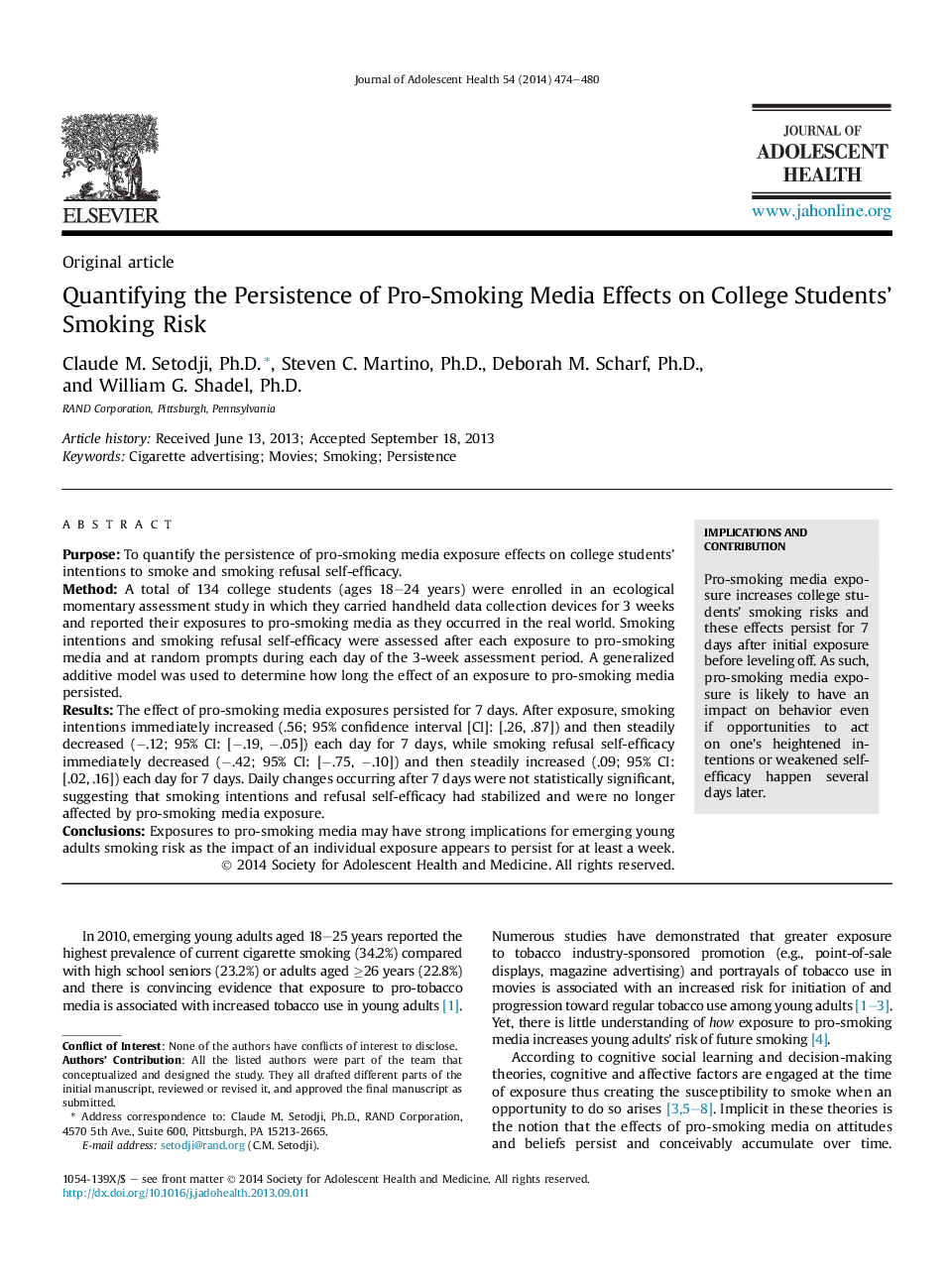| Article ID | Journal | Published Year | Pages | File Type |
|---|---|---|---|---|
| 1078840 | Journal of Adolescent Health | 2014 | 7 Pages |
PurposeTo quantify the persistence of pro-smoking media exposure effects on college students' intentions to smoke and smoking refusal self-efficacy.MethodA total of 134 college students (ages 18–24 years) were enrolled in an ecological momentary assessment study in which they carried handheld data collection devices for 3 weeks and reported their exposures to pro-smoking media as they occurred in the real world. Smoking intentions and smoking refusal self-efficacy were assessed after each exposure to pro-smoking media and at random prompts during each day of the 3-week assessment period. A generalized additive model was used to determine how long the effect of an exposure to pro-smoking media persisted.ResultsThe effect of pro-smoking media exposures persisted for 7 days. After exposure, smoking intentions immediately increased (.56; 95% confidence interval [CI]: [.26, .87]) and then steadily decreased (−.12; 95% CI: [−.19, −.05]) each day for 7 days, while smoking refusal self-efficacy immediately decreased (−.42; 95% CI: [−.75, −.10]) and then steadily increased (.09; 95% CI: [.02, .16]) each day for 7 days. Daily changes occurring after 7 days were not statistically significant, suggesting that smoking intentions and refusal self-efficacy had stabilized and were no longer affected by pro-smoking media exposure.ConclusionsExposures to pro-smoking media may have strong implications for emerging young adults smoking risk as the impact of an individual exposure appears to persist for at least a week.
